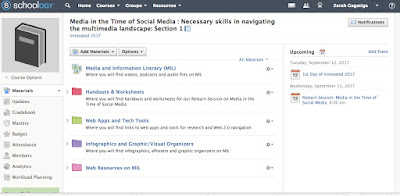 See You in the Cosmos
See You in the Cosmos
Jack Cheng
Dial, 2017
In case you missed it, I wrote my review of
See You in the Cosmos in the blog early this month. Two book bloggers also posted their responses and reactions to the book.
Teacher Cris' review has an "audio recording" using a Golden iPod and Philippine Board on Books for Young People President,
Tarie Sabido's review includes a line up of cool activities for teachers and librarians. Needless to say, there are so many things to enjoy in this book besides, Alex's engaging thoughts about life, love and rocket science.
Here now are my recommended resources and guide for the avid reader, the teacher who will pick up the book for the class's reading list and the librarian who will discuss the book during the monthly book club.
It's not Rocket Science. But it is!
Build reading context about rockets and space shuttles. Alex's adventure begins the day he dreamed of launching a rocket into space. By joining an adult community of space and rocket science enthusiasts, Alex learned important lessons in building rockets, making mistakes and taking second chances. In
The Chemistry of Rockets a video explaining how rockets work, middle grade readers of the book can take a closer look at rocket science.
Education.com has DIY activities on making rockets that are applicable for entries to Science Fairs.
NASA has a timeline of successful and disastrous space shuttle programs in the 20th century. Launching rockets into space isn't as cool as it seems to be when we see them on TV and in the movies.
Discussion question: What fueled Alex to launch a rocket into space?
Literary Link: Make a character chart or road map about Alex.
Use a mind map or graphic organizer to map Alex's character before he launched the rocket, during the course of his journey and at the end of the road trip he had
with seemingly nice adults. Infographic apps like
easel.ly and
My Poplet can also be used. Below are guide questions in making the map, graphic organizer or infographic.
Who was the Alex you met at the start of novel?
What ups and downs did he experience along the way?
Who are the people Alex met that changed the way he looks the world?
What events in his journey confused him and inspired him to demand and seek the truth from his elders and from life in general?
How did he deal with his mother's condition?
Describe Alex at the end of the novel? How different is this Alex from the start of the novel?
Extending Understanding of the Text
Ask yourself:
What trips or journeys have you experienced that changed the way you view life or affirmed that life is worth living for?
How did the journey changed your views and beliefs?
Does the change in view or of belief in life move you to do something? If yes, what is your course of action? If not, why?
Carl Sagan and Modern Day Explorations
Carl Sagan, the scientist and not Alex's dog, is a real life character
that made a big influence in Alex's fascination in space, astronomy and rockets. Figuratively, Carl Sagan is the representation of Alex's philosophical nature and his penchant for documenting the journey towards understanding the truth. A philosopher and scientist, Carl Sagan inspired others to be curious, courageous, humble, open and to take risks. These are characteristics we find in explorers and thinkers. These are the same qualities I find in Alex at every turn of the plot until the final chapters of the novel.
If anything, Jack Cheng, reminded me to continue pursuing dreams, silly or not, and to be like Alex or Carl Sagan who could wonder at the vastness of space and be in awe at the smallness of humanity against the backdrop of the greatness of the universe.
Just how relevant is Carl Sagan to modern science?
The Smithsonian writes about him in 2014 and the legacy he left behind. Even the title of the
book has the word,
Cosmos, a homage to Carl Sagan and his enlightening documentary show on TV back in the 70s and in the 80s.
Just how relevant is Carl Sagan to humanity?
Listen to his narration about humanity and space in the
Pale Blue Dot, a recording made at NASA while the Golden Voyager beams itself from millions of light years away from where it was launched.
Discussion question: What modern day explorations are moving and shaking science and technology to new directions for humanity's progress and salvation?
Writing Activities:
1. Keep a journal where you record daily musings that may look or sound mundane. But, on closer inspection, these musings can grow into insights that reflect existential thoughts and ideas that span space and time. It may be a topic for a future essay in academic or personal purposes.
2. Blog about daily explorations with the self and the world around you. You will never know what you will discover just around the bend or in the recesses of your mind.
3. Take photos that interest you. It may be an object, an event a person you like. These may be jump off points for stories waiting to be told.
These are all for now. Until next book review, resources and guide.
















